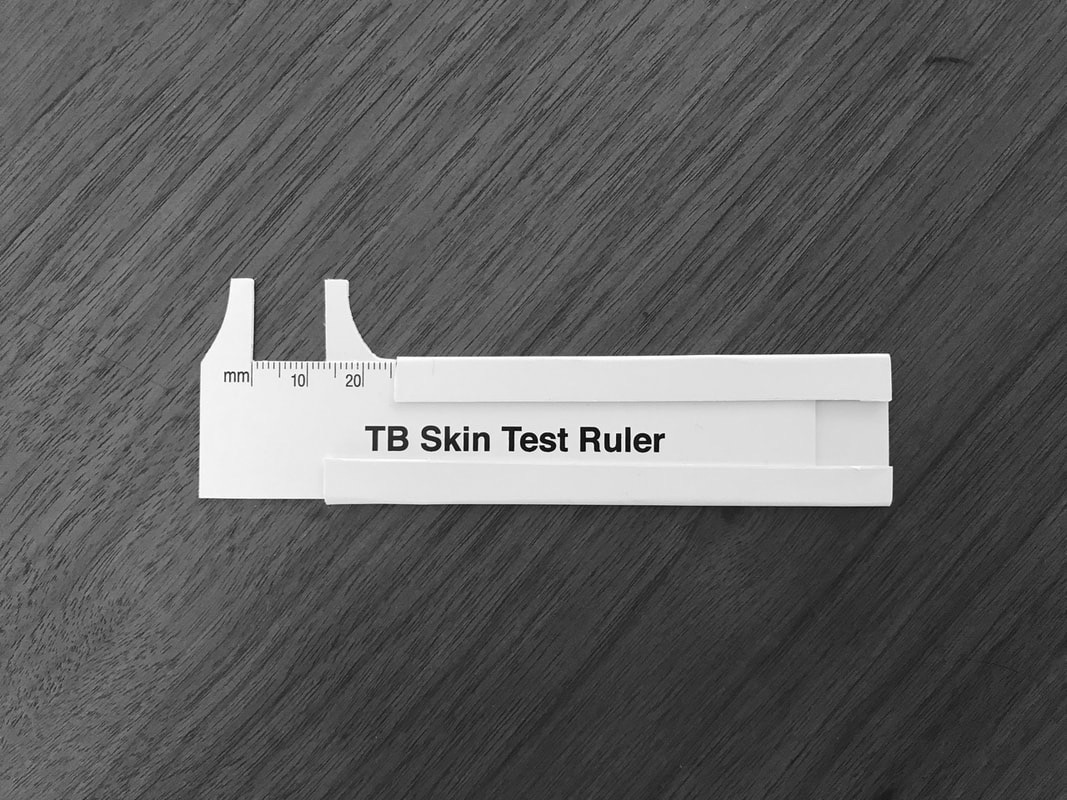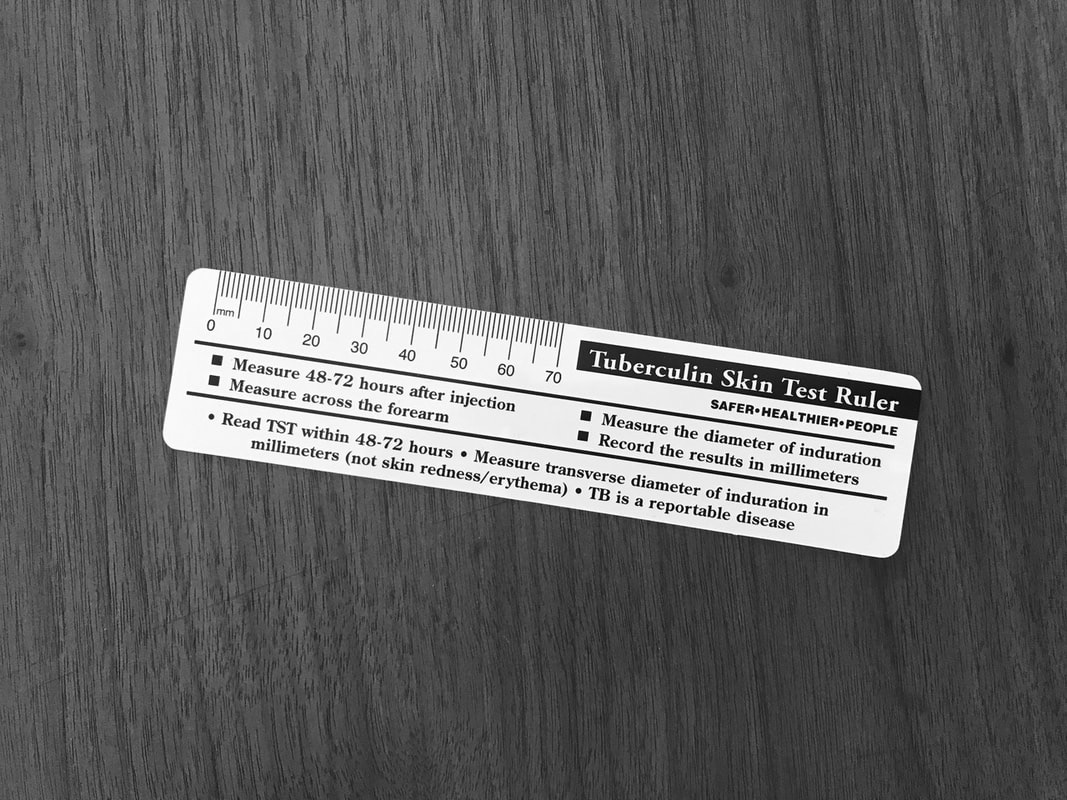AT A GLANCE
When the Center for Disease Control (CDC Atlanta) wanted to develop a simple but effective tool for combatting and treating Tuberculosis, they contacted Loomis Sales Corporation - creators of the Loomis TB Rulers. With 30+ years of custom plastic and screen printing manufacturing experience, we spent years researching and refining the TB ruler. Now recognized globally as the best way to measure for TB, the design we developed has been imitated by many, but the people behind this now-standard equipment are still here at Loomis Sales.
CDC CERTIFIEDLoomis Sales has manufactured the only CDC Certified TB rulers for over 20 years.
|
REUSEABLEUnlike common paper rulers, our rulers are plastic, making them easily reusable.
|
DURABLEOur rulers are designed to avoid breakage and can be used again and again.
|
WHAT IS TB?
"TB" is short for tuberculosis. TB disease is caused by a bacterium called Mycobacterium tuberculosis. The bacteria usually attack the lungs, but TB bacteria can attack any part of the body such as the kidney, spine, and brain. If not treated properly, TB disease can be fatal.
TB is spread through the air from one person to another. The TB bacteria are put into the air when a person with active TB disease of the lungs or throat coughs, sneezes, speaks, or sings. People nearby may breathe in these bacteria and become infected.
A total of 9,105 TB cases (a rate of 2.8 cases per 100,000 persons) were reported in the United States in 2017. This is a decrease from the number of cases reported in 2016 and the lowest case count on record in the United States. The case rate of 2.8 per 100,000 persons is a 2.3% decrease from 2016. Ending TB requires maintaining and strengthening current TB control priorities while increasing efforts to identify and treat latent TB infection among high-risk populations.
CDC estimates that about 13% of U.S. TB cases with genotype data are attributed to recent transmission. Distinguishing the numbers of cases attributed to recent transmission from those likely due to reactivation of longstanding, untreated latent TB infection is one of many tools state and local TB programs can use to design and prioritize effective public health interventions.
KEY TB FACTS
▪ 10 million people fell ill with TB in 2017, including 0.9 million among people living with HIV. ▪ TB was one of the top 10 causes of death worldwide in 2017, and was responsible for more deaths than HIV. In 2017, 1.6 million people died from TB*, including 0.3 million among people with HIV. ▪ Globally in 2017, an estimated 558 000 people developed TB that was resistant to rifampicin (RR-TB), the most effective first-line drug, and of these, 82% had multidrug-resistant TB (MDR-TB).
TB is spread through the air from one person to another. The TB bacteria are put into the air when a person with active TB disease of the lungs or throat coughs, sneezes, speaks, or sings. People nearby may breathe in these bacteria and become infected.
A total of 9,105 TB cases (a rate of 2.8 cases per 100,000 persons) were reported in the United States in 2017. This is a decrease from the number of cases reported in 2016 and the lowest case count on record in the United States. The case rate of 2.8 per 100,000 persons is a 2.3% decrease from 2016. Ending TB requires maintaining and strengthening current TB control priorities while increasing efforts to identify and treat latent TB infection among high-risk populations.
CDC estimates that about 13% of U.S. TB cases with genotype data are attributed to recent transmission. Distinguishing the numbers of cases attributed to recent transmission from those likely due to reactivation of longstanding, untreated latent TB infection is one of many tools state and local TB programs can use to design and prioritize effective public health interventions.
KEY TB FACTS
▪ 10 million people fell ill with TB in 2017, including 0.9 million among people living with HIV. ▪ TB was one of the top 10 causes of death worldwide in 2017, and was responsible for more deaths than HIV. In 2017, 1.6 million people died from TB*, including 0.3 million among people with HIV. ▪ Globally in 2017, an estimated 558 000 people developed TB that was resistant to rifampicin (RR-TB), the most effective first-line drug, and of these, 82% had multidrug-resistant TB (MDR-TB).



